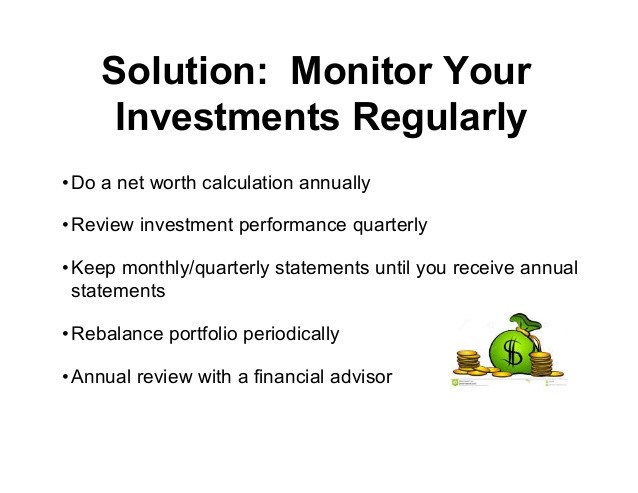3 Tips to a Painless YearEnd Review of Your Investment Portfolio
Post on: 30 Март, 2015 No Comment

An annual task that all investors should be sure to complete is the year-end review of their investment portfolio. This gives you a chance to assess how your investments are performing, rebalance your asset allocation and review any incurred fees. Below are three tips to help guide your year-end portfolio review:
Review Performance
Just like that other perennial New Year’s goal of losing weight, a good portfolio review starts with a weigh-in. You’ve got to know where you stand to know what to lose, right? So you want to measure the performance of your investments with a suitable benchmark that matches your portfolio. Let’s put it up on the scale.
If you have a typical 60/40 investment mix of stocks to bonds, you’ll want to compare the return of your investments to a 60/40 blended benchmark. One way to do that is to look at a portfolio of index mutual funds, or exchange-traded funds (ETFs). The iShares Growth Allocation ETF (AOR ) is a good example. Comparing your investments to this low-cost mix of exchange-traded funds will give you a good idea of how you’re doing, if you prefer a moderate-risk portfolio. You’ll also find aggressive, conservative and target-date ETF portfolios to compare to your portfolio. You can use similar allocation investments from Vanguard and Fidelity as benchmarks, too.
If your investment mix is performing reasonably close to the index investments, you are in great shape. But if they are limping along and way underperforming, it may be time to overhaul your retirement savings plan and put a new long-term strategy in place. A Certified Financial Planner™ can help, as can a CPA or well-regarded fee-only financial advisor.
Check How Much You Are Paying In Fees
Your nest egg should be nurtured, coddled and cared for until it’s ready to hatch a steady and secure income stream for your life-after-work. Too many fees will cook your goose, and that’s not a good thing.
We’ve all heard about how excessive fees can stall your retirement savings. But how can you tell how much you’re paying? Here are some tips:
- If your investments are held in an employer-sponsored retirement plan, like a 401(k), ask your employer for a list of all fees being charged. As plan sponsor, they may be paying some of the fees (good) or deducting the fees from the plan (bad). You’ll also want to know the expenses embedded in each investment choice: management fees, 12b-1 fees and all the rest. NerdWallet’s Mutual Fund Tool can help.
- If your portfolio is held in an IRA, ask your broker for a disclosure of all fees. And once again, that will need to include mutual fund fees and sales charges, trading fees, custodian and account fees, commissions, etc.
- And if your investments are in a regular taxable account, your broker will be able to supply all of the fees – seen and unseen – that you are being charged. Be sure to find out if your financial consultant is charging an advisory fee, too.

One thing is for sure: the investment world is becoming more and more transparent when it comes to fees – if you ask. They have to. In today’s regulatory environment, full fee disclosure is becoming mandatory. It’s just a matter of reading the fine print – or better yet, making a firm and formal request for fee information.
Rebalance Asset Allocation
You know those ugly little pie charts you see on your investment statement? We want those slices to remain pretty much the way they started – assuming you put a good strategy in place from the very beginning.
Here’s the bottom line: Let your winners run, but consider taking a little profit off of the table on a regular basis.
That means if you started with 60% in stocks and 40% in bonds and now you’re at a 50/50 mix, you may want to bring those levels back in line. That way, you’re taking some profit from the investments that have already made you money, and keeping your portfolio in tune to the risk model you decided to start with.
In tax-deferred accounts this regular realignment is easy, but if your investments are held in a taxable account, you may want to get advice from a CPA on how to manage the tax consequences of an investment rebalancing.
Neda Jafarzadeh is an analyst for NerdWallet. a site dedicated to helping investors make better financial decisions with their investments.














